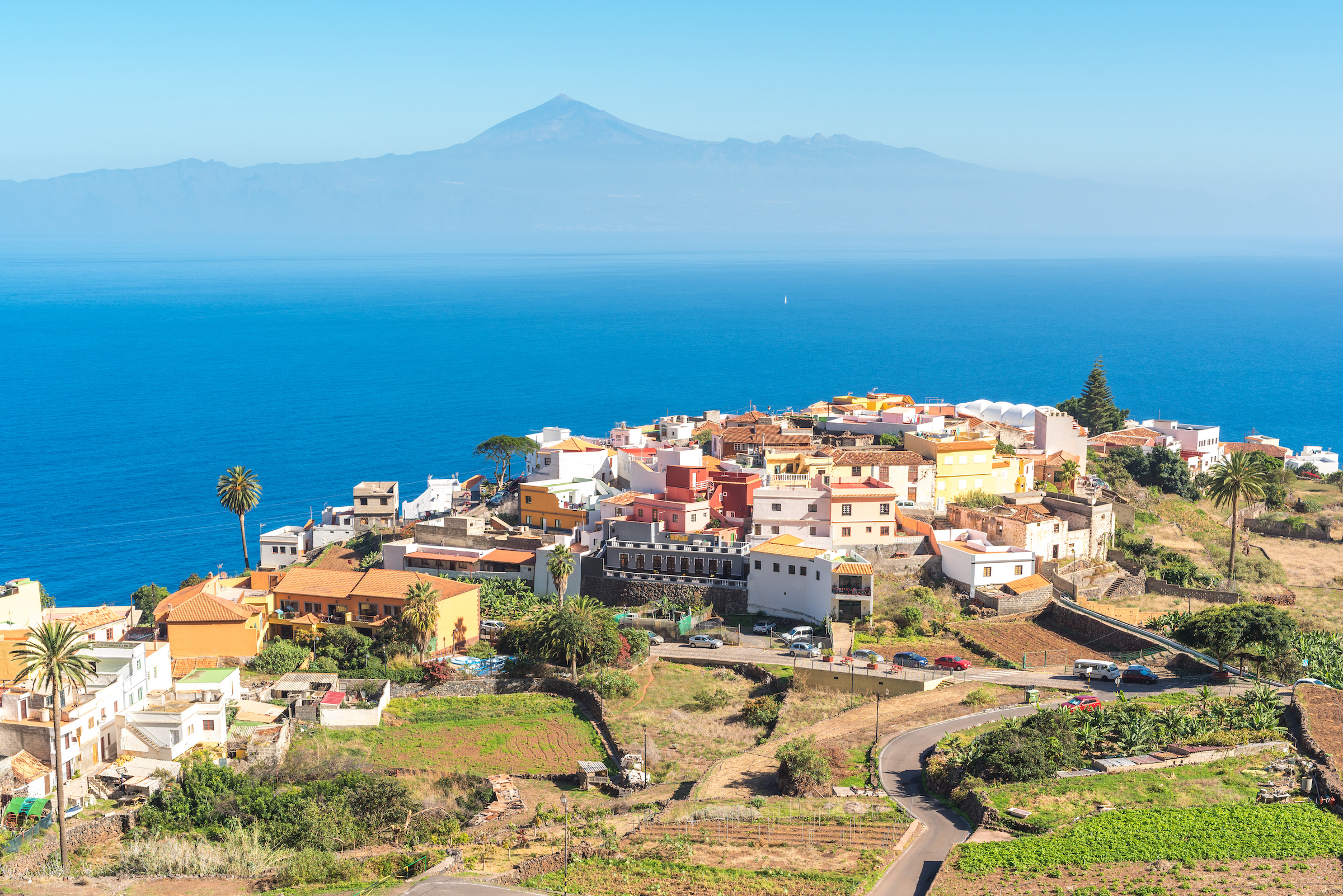"El Silbo" - Messages fly over the valley
It may well have been due to the geographical situation of La Gomera that "El Silbo", the whistling language, was used here many generations ago as a means by which farmers could communicate across a valley. Long before the Canary Islands were graced with the blessings of the Internet and smartphones, whistling was practiced on La Gomera. This is unique in the world and even attracted the attention of UNESCO, which placed "El Silbo" on the World Heritage List in 2009. Very special techniques are used to imitate the normal sounds of speech and to produce vowels and consonants. A considerable part of the inhabitants of this island still masters these "flying messages", which vacationers encounter especially at fiestas.
The small bananas of the Canary Islands
If you like bananas, you can't miss the smaller ones that grow in the Canary Islands. Connoisseurs believe that only these are really tasty. As on the neighboring island of La Palma, they grow here more often under the roof of protective tarpaulins. These are not a formative element of the islands, but the farmers already lived from the yields of the bananas before the vacationers discovered these worlds for themselves. On La Gomera, they grow magnificently and, together with the splendor of the flowers and the stately palm trees, form a landscape in which Mother Nature shows herself from her most generous side. In the seventies of the last century, it was mainly dropouts or sympathizers of the burgeoning hippie culture who lost their way to La Gomera.
To slow down in the laurel forest
Today there is a small airport near the capital San Sebastián, but its runway is so short that only small planes can land here after domestic flights. Many vacationers, however, come via Tenerife and then board a ferry operated by the Fred Olson shipping company to the second smallest of all the Canary Islands. And most of them already wear their hiking boots during the flight to lighten their luggage. La Gomera is hardly larger than the city-state of Bremen and is a suitable vacation destination especially for those people who simply want to slow down. They will find ample opportunity to do so on hikes through laurel forests, giant ferns and under the lianas of gnarled tree giants.
Garajonay - an almost mystical world
For more than three decades, Garajonay National Park has been protected by UNESCO. This is an almost mystical and sometimes misty world with water-rich gorges, where the Rio de el Cedro plunges into the depths with a hundred-meter waterfall. There, between the mountains of the north, ducks the picturesque village of Hermigua in the middle of a green landscape. The so-called "twin rocks" Roques de San Pedro, which were formed from upshot volcanic vents, are the landmarks of this area. In former times there was a sugar mill here, but the once important export commodity of the Spanish immigrants then lost more and more importance. The Dominican monastery El Convento de Santo Domingo, with its Tuscan columns and Gothic arches, looks back on a long history in the neighborhood.
After the hike a bath in the sea water pool
It is the villages of the north that have a special attraction for vacationers on La Gomera. Hikers can learn about the flora, fauna and exceptional geological features of this region at the Juego de Bolas Visitor Center. Free guided hikes are also organized there. Attached to this center is an ethnographic museum and a botanical garden. And those who have explored the region after many kilometers on foot, over hill and dale, and are in the mood for a cool swim, should head for the seawater pool. However, the use of the facility at the old pier is only recommended when the surf is not too heavy and is rather dangerous in high swells.
Valle Gran Rey - the valley of the "great king
One of the great experiences on La Gomera is a hike in the Valle Gran Rey with its terraced steep flanks that slope down to the sea and open into a beautiful bay. This is then also a hotspot of international tourism, because in Valle Gran Rey there are numerous accommodations in fincas and private houses in La Playa, La Puntilla and Vueltas. Bathing in this valley is done on small beaches where the volcanic sand is as black as the night. Those who like to bathe naked go to Playa del Inglés. The "Valley of the Great King" developed into a popular vacation destination in the seventies. Part of the charm that characterized this region in the time of "flower power" has survived and remained.
The adopted home of many great sea creatures
Not only hikers but also mountain bikers will find excellent conditions of leisure in Valle Gran Rey. From there also the boats start to the popular Whale Watching, because the Atlantic zones before La Gomera are the choice home of 26 kinds of dolphins and whales. Even if the ferry traffic and the exercises of the navy cause some problems to the big sea inhabitants, the population of the "blue wonders" in sight of the Valle Gran Rey has remained largely constant. Researchers have been advocating for years to make this region a protected area. When the sea level is calm, it looks to visitors on boats as if the bottlenose dolphins are hovering over a mirror of azure glass. However, according to statistics, every pilot whale in the strait between La Gomera and Tenerife is rammed by a ship twice a year.
The biologists' dream of protection for whales
Whale watching earns a lot of money everywhere in the maritime zones of the world. This is also the case in La Gomera. But there are more and more voices demanding restraint from this industry, because the whales and dolphins are disturbed in their habitat and especially in their feeding. Every now and then, beaked whales drift lifeless to the coast of the island after a collision with one of the fast boats or ferries. Marine biologists want to use measuring instruments to study the behavioral patterns of the whales. This is also to prevent these mammals from getting lost. Many of them, however, still have the dream of the sanctuary off La Gomera.
Where Columbus replenished his water supplies
La Gomera is also an island where legends have been passed down from generation to generation for centuries. This is also the case of Christopher Columbus, who on his further journey west was actually looking for a way to India and rather accidentally found the one to America. In San Sebastian, where bright yachts and colorful boats rock in the small harbor, there is an old customs house from the 17th century. Here, in the Casa Aduana on the Plaza, goods destined for export were once registered and stored. According to one of the legends, Christopher Columbus refreshed his water supplies for the journey across the ocean in the courtyard of the customs house in 1492. Of course, no one really knows if the story is true.
A sacrificial and cultural site of the Guanches
La Gomera also has a table mountain called La Fortaleza. If you hike it, you can look forward to the most amazing panoramic view this island has to offer. Up here, at an altitude of 1,241 meters, there was a sacrificial and cultural site of the Guanches in primeval times. Little is known about their rites, only circular symbols on the rocks have survived. They can also be found on the neighboring islands. If you climb the Mirador de Abrante, you should have a good head for heights, because at a height of 600 meters you look directly down on the beautiful village of Ogulo with its colonial buildings. There is no question about it: La Gomera exudes an extraordinary magic. With fairytale forests, with pure nature, evergreen cloud forests and with whales and dolphins on the wet doorstep. But also with fun-loving inhabitants who feel extremely comfortable in their role as hosts.


